13 Depressing Meals Poor Families Survived On In The ’60s
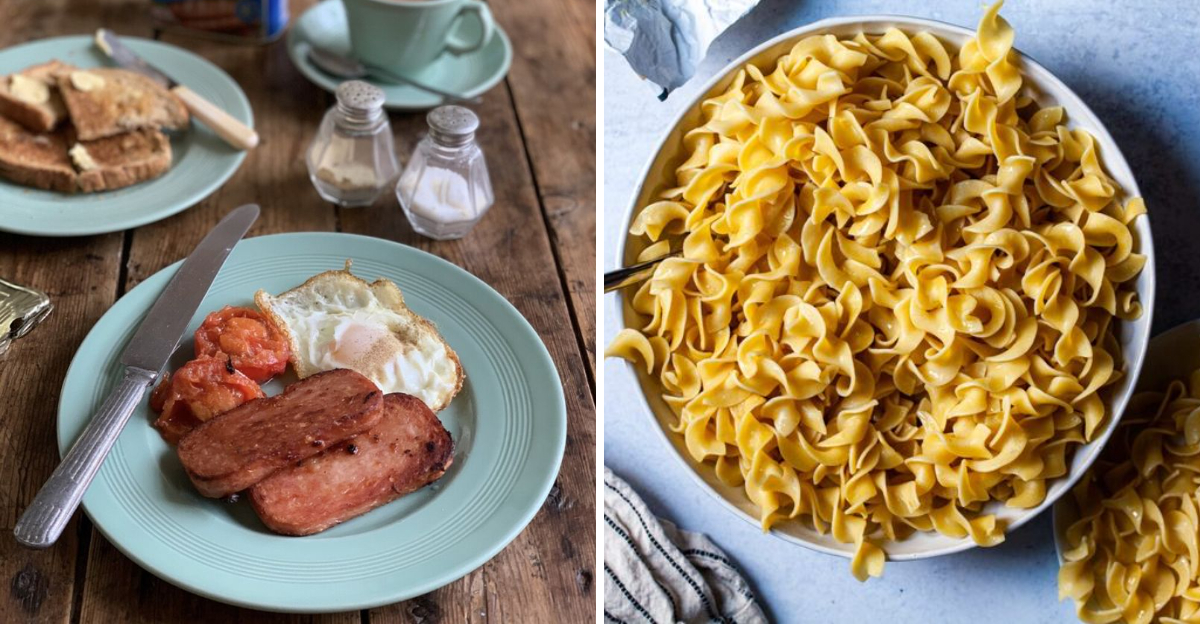
The 1960s weren’t just about peace signs and pot roasts—many families across America were struggling to get by. For those with tight budgets, creativity in the kitchen wasn’t about culinary flair; it was about stretching a dollar as far as it could go. These meals were cheap, filling, and often a bit sad—but for many, they were the taste of survival.
1. Ketchup Sandwiches
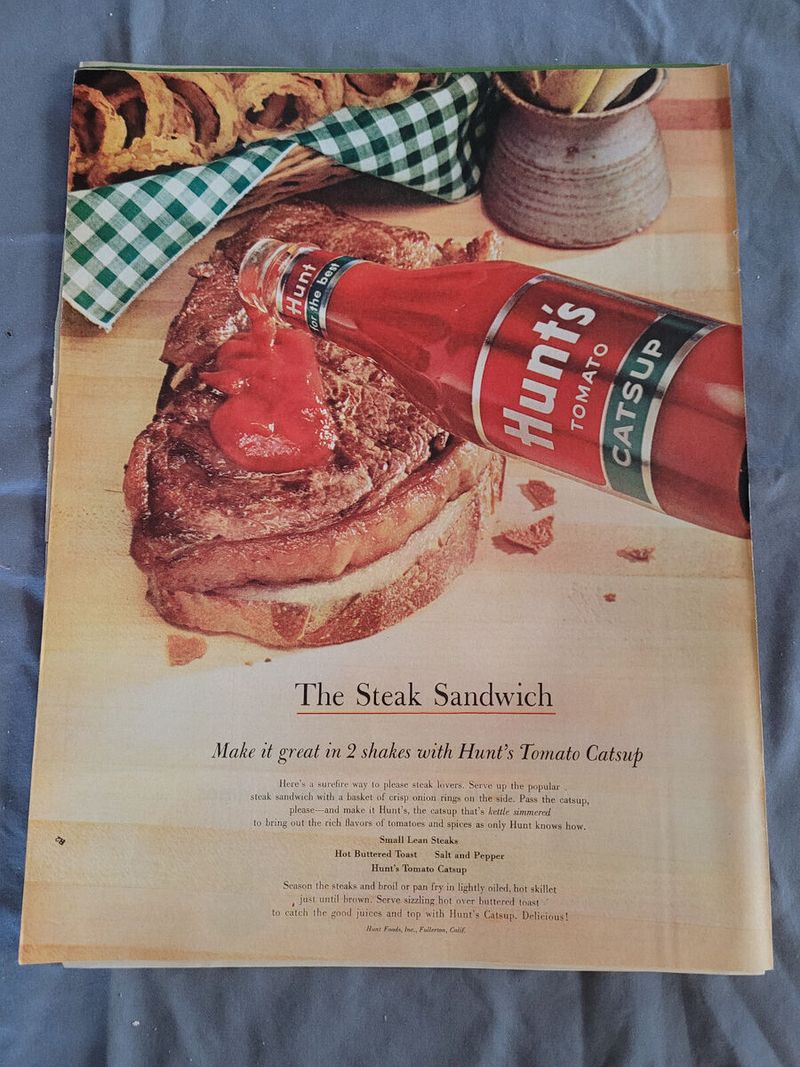
In a pinch, kids in the ’60s often relied on ketchup sandwiches. With no meat or cheese at hand, just a dollop of ketchup could transform plain bread into a meal. The tangy, soggy texture was hardly gourmet, but it filled empty stomachs. Imagine sitting at a worn kitchen table, the smell of the ketchup mingling with the mustiness of the room, every bite a reminder of necessity. For many, this simple meal represented the daily struggle to make ends meet, highlighting the resilience and ingenuity required to survive tough times.
2. Creamed Chipped Beef on Toast
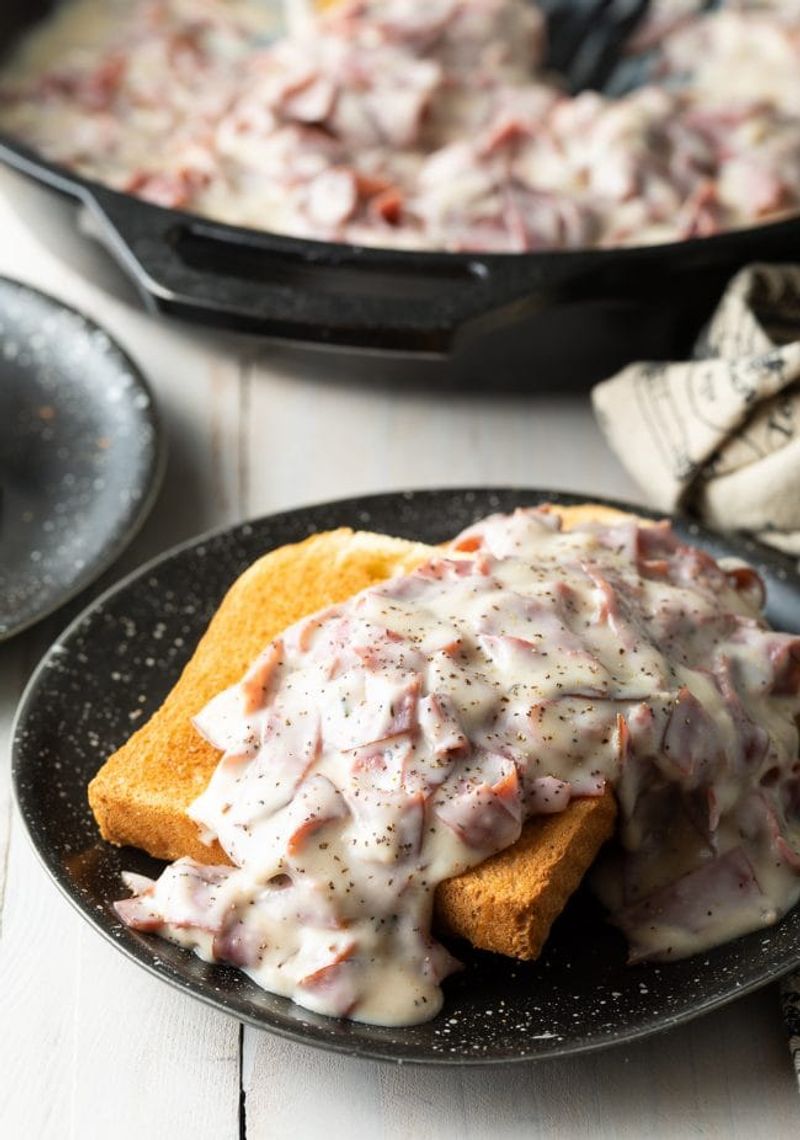
Often dubbed “S.O.S.,” creamed chipped beef on toast was a staple in many homes. The salty, creamy dish consisted of dried beef simmered in white gravy, ladled generously over toasted bread. Originally a military dish, it made its way into civilian kitchens, providing an affordable way to stretch a small amount of beef. Picture the scene: a family gathered around the table, the aroma of gravy filling the air, each person savoring the filling warmth. While it might have lacked elegance, it certainly did the job of keeping hunger at bay.
3. Bread and Milk
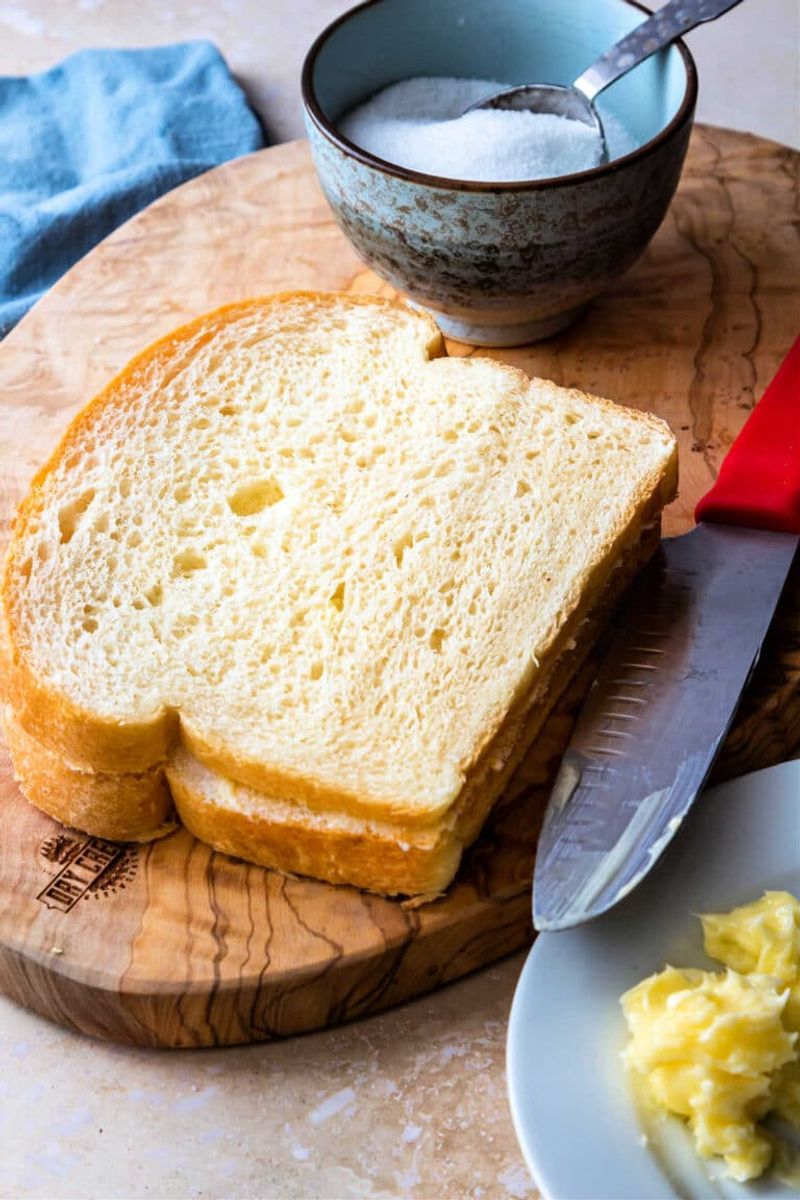
Bread and milk was a go-to for those with limited options. Torn pieces of white bread soaked in milk, sometimes sweetened with a touch of sugar, made for a meal that could be eaten at any time of the day. Sitting at the table with a bowl of this mixture, the sound of the spoon clinking against the bowl, evoked a sense of both comfort and survival. It filled bellies with its simplicity, representing a time when meals were more about sustenance than taste, ensuring families could push through another day.
4. Bologna and White Bread
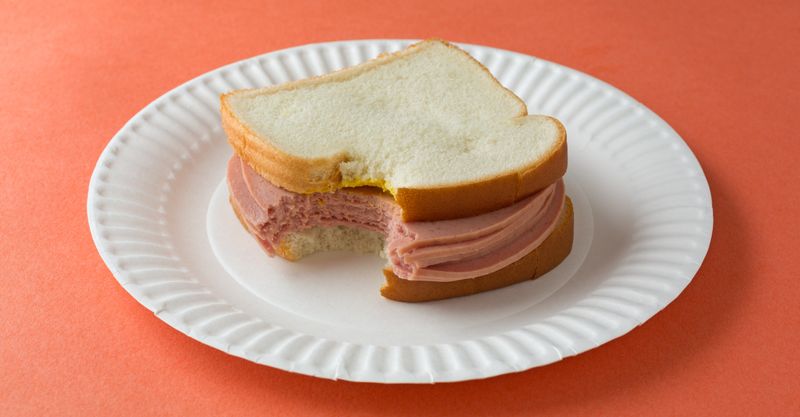
Bologna sandwiches were a lunchtime regular. A cold slice of bologna between two slices of white bread, without any condiments, was a familiar sight. On a rare occasion, adding an extra slice of bologna felt like a luxury. Picture a child opening their lunchbox, finding the sandwich wrapped in wax paper, the smell of processed meat mingling with the anticipation of the meal. This simple sandwich stood as a testament to frugality, offering a quick and affordable way to fill hunger pangs, reflecting the economic constraints of the era.
5. Hot Dog and Potato Casserole
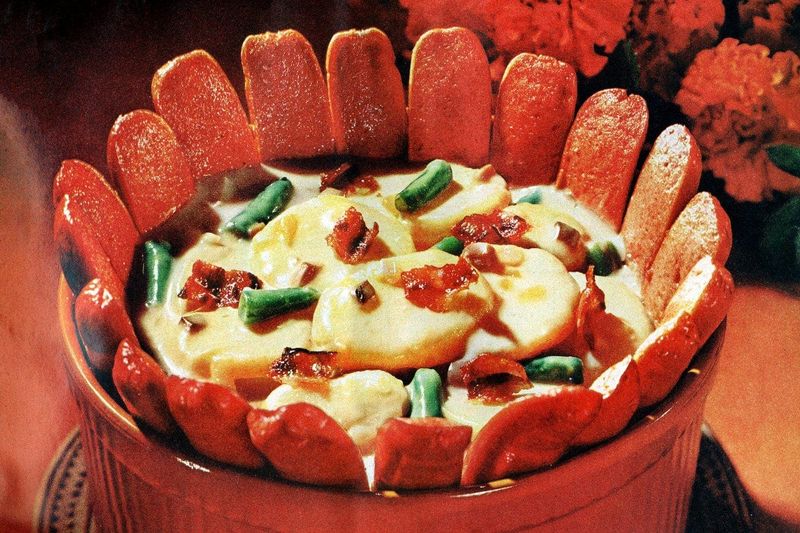
Hot dog and potato casserole meant a hot meal on a budget. Sliced hot dogs mixed with boiled potatoes, often covered with a can of soup or milk, then baked to completion. The aroma of this dish wafting through the house signaled dinnertime. As family members gathered, the warmth of the casserole provided not just calories, but a sense of togetherness. Despite its simplicity, the meal offered a comforting, hearty option. It stood out as a creative use of inexpensive ingredients, highlighting the resourcefulness required during trying times.
6. Spam and Eggs
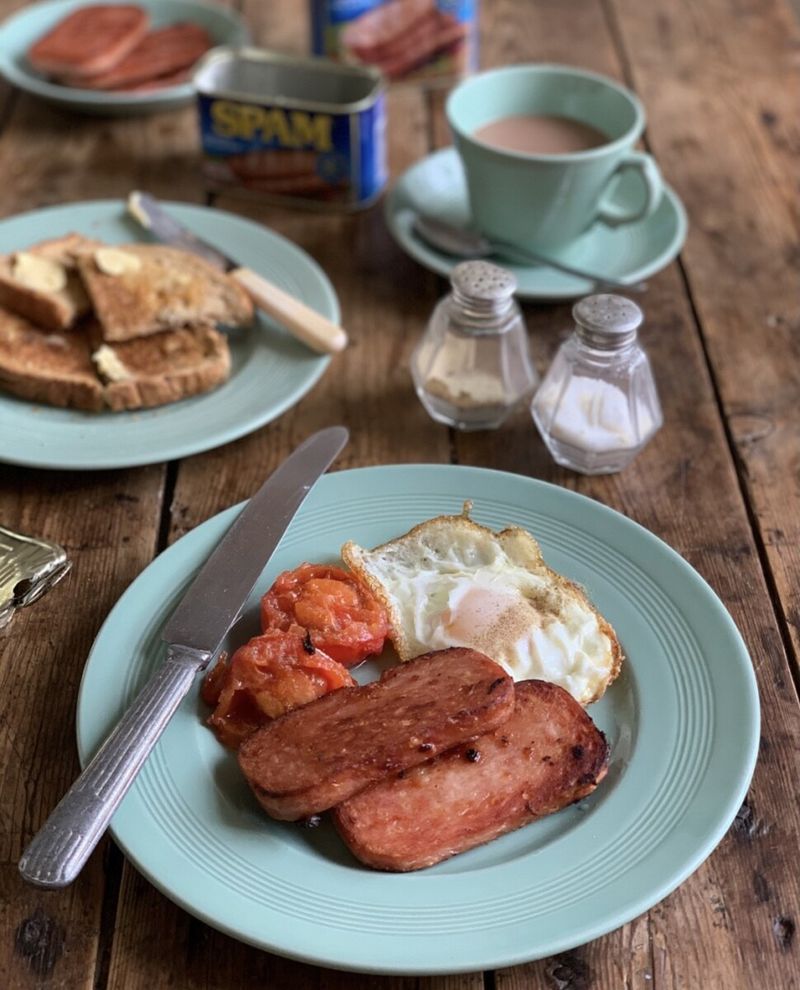
Spam and eggs brought protein to the table. This combination of canned meat and scrambled eggs appeared frequently on dinner plates. Picture the sizzle of Spam slices hitting a hot pan, the aroma blending with that of eggs cooking. For many households, Spam’s affordability made it a regular choice. The meal was both salty and greasy, yet it provided much-needed nourishment. It represented the essence of ’60s dining for many families, a time when practicality trumped flavor, and every meal was a balancing act between cost and sustenance.
7. Goulash (The Stretch-It Special)
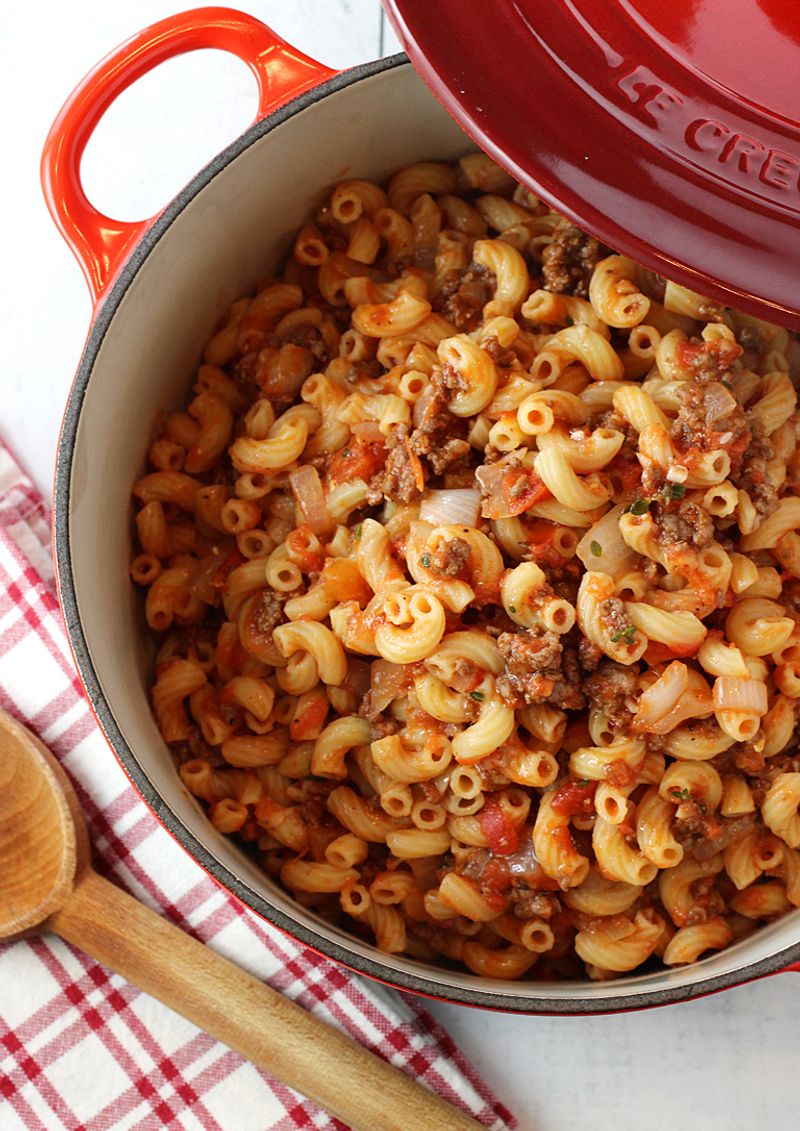
Goulash, affectionately termed the “Stretch-It Special,” was a go-to for feeding many mouths. This dish combined elbow noodles, a bit of ground beef (if available), and tomato sauce, creating an ever-adaptable concoction. Imagine a steaming pot on the stove, wafting the scent of tomatoes and spices. Families gathered around this one-pot meal, scooping generous portions onto plates. Its versatility meant it could accommodate leftovers, making it a practical choice. The goulash stood as a culinary testament to survival, embodying ingenuity in the kitchen during financially tight times.
8. Rice and Gravy
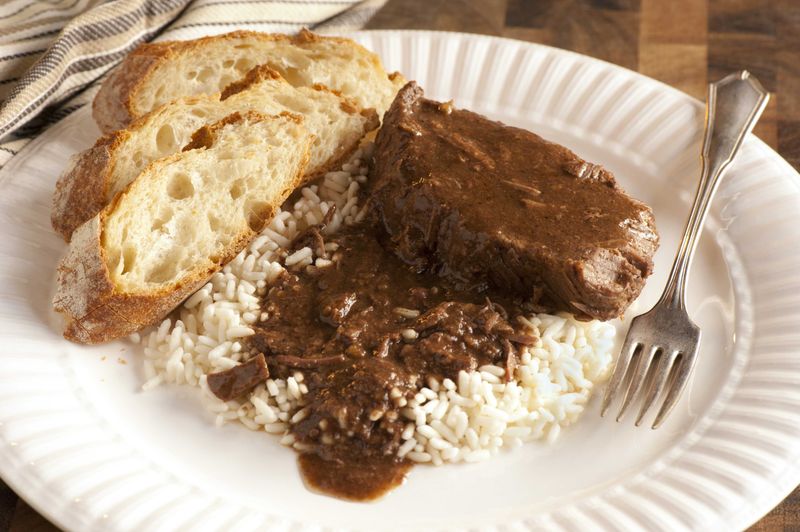
Rice and gravy was the epitome of no-frills dining. Without meat, a simple roux or leftover drippings poured over rice created a comforting dish. Picture the steaming plate of rice, the gravy seeping into every grain, filling the room with a savory aroma. This meal offered warmth and starchy comfort, a staple that brought solace in its simplicity. As families gathered, this humble dish provided a sense of togetherness. It was a reminder that even in lean times, a little ingenuity could transform basic ingredients into satisfying sustenance.
9. Buttered Noodles
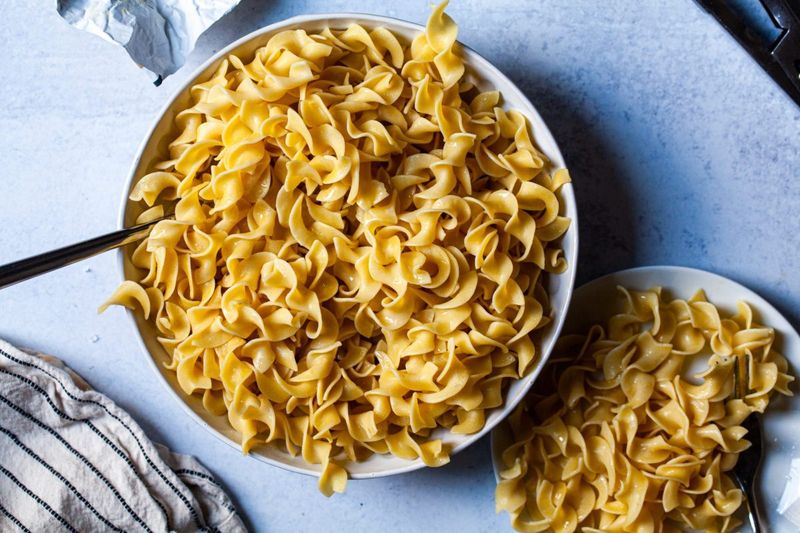
Buttered noodles served as a versatile side or main dish. Boiled noodles tossed with margarine, seasoned with salt, pepper, or a dash of garlic powder, filled many plates. Picture sitting at the kitchen table, the gentle sheen of margarine glistening on the noodles. This simple dish offered a reliable fallback when pantry options dwindled. It stood out as comfort food, each bite a simple pleasure amidst financial challenges. As families navigated the era’s economic landscape, buttered noodles remained a constant, highlighting the era’s reliance on affordable, uncomplicated meals.
10. Jell-O With Fruit Cocktail

Jell-O with fruit cocktail was the vibrant, jiggly treat that doubled as a meal. This dessert-like concoction featured canned fruit suspended in sweet, colorful gelatin. Imagine the anticipation of cutting into the Jell-O mold, releasing fruit pieces as it wobbled on the plate. This dish was a special event, a burst of color on the table. While it didn’t provide substantial nourishment, it brought moments of joy and a break from monotony. It stood as a testament to the creativity employed to bring levity to meals, even when resources were scarce.
11. Canned Pork and Beans on White Bread
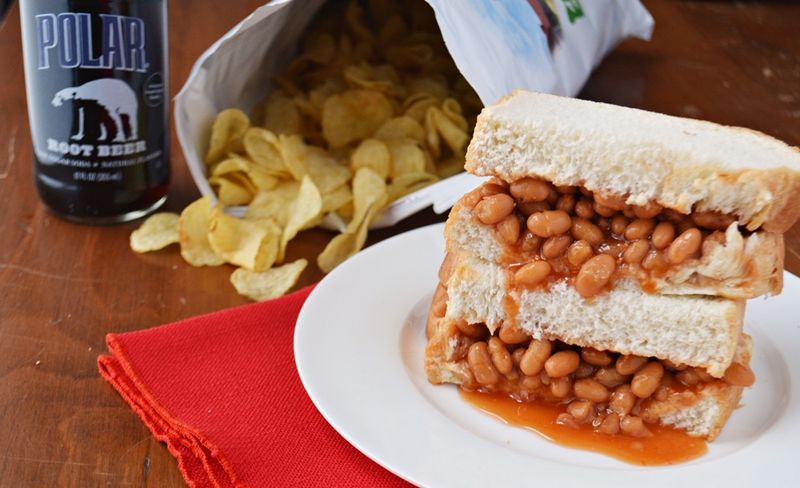
Canned pork and beans on white bread carried over from Depression-era kitchens. Warmed or straight from the can, spooned over a slice of bread, it offered a quick, filling bite. Picture the sound of the can opener, the beans’ aroma mingling with the fresh scent of bread. This dish held a place in many households, a staple that required minimal preparation. Though basic, it filled stomachs and embodied the era’s practicality. For many, it was a taste of history, a connection to past struggles reflected in every humble meal.
12. Mashed Potato Sandwiches
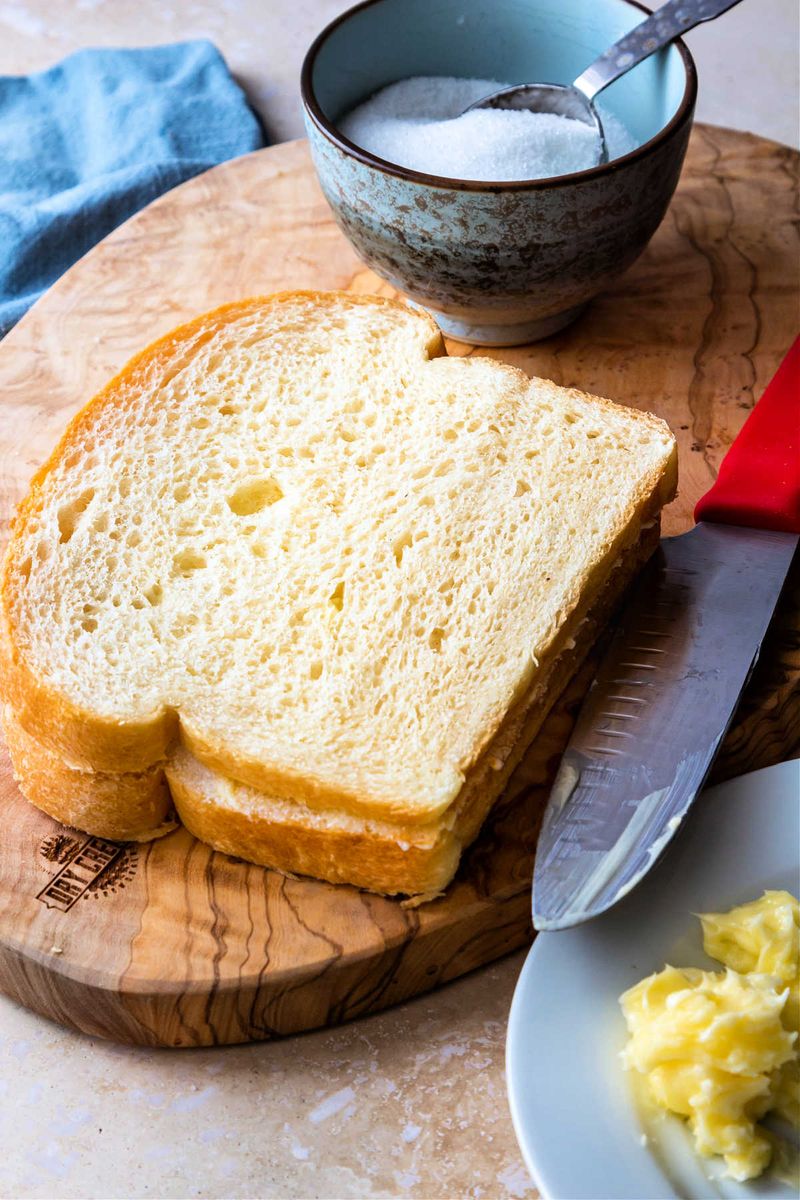
Mashed potato sandwiches were carb-filled wonders. Cold mashed potatoes spread between slices of bread, sometimes with a bit of butter, created a filling meal. Picture biting into the soft bread, the potatoes’ smooth texture meeting the palate, bringing warmth and satiety. It was an economical way to use leftovers, ensuring nothing went to waste. This sandwich symbolized resourcefulness, a creative solution to hunger when options were limited. It exemplified the era’s necessity-driven culinary practices, offering a glimpse into the daily lives of families striving to make every meal count.
13. Mayonnaise Sandwiches
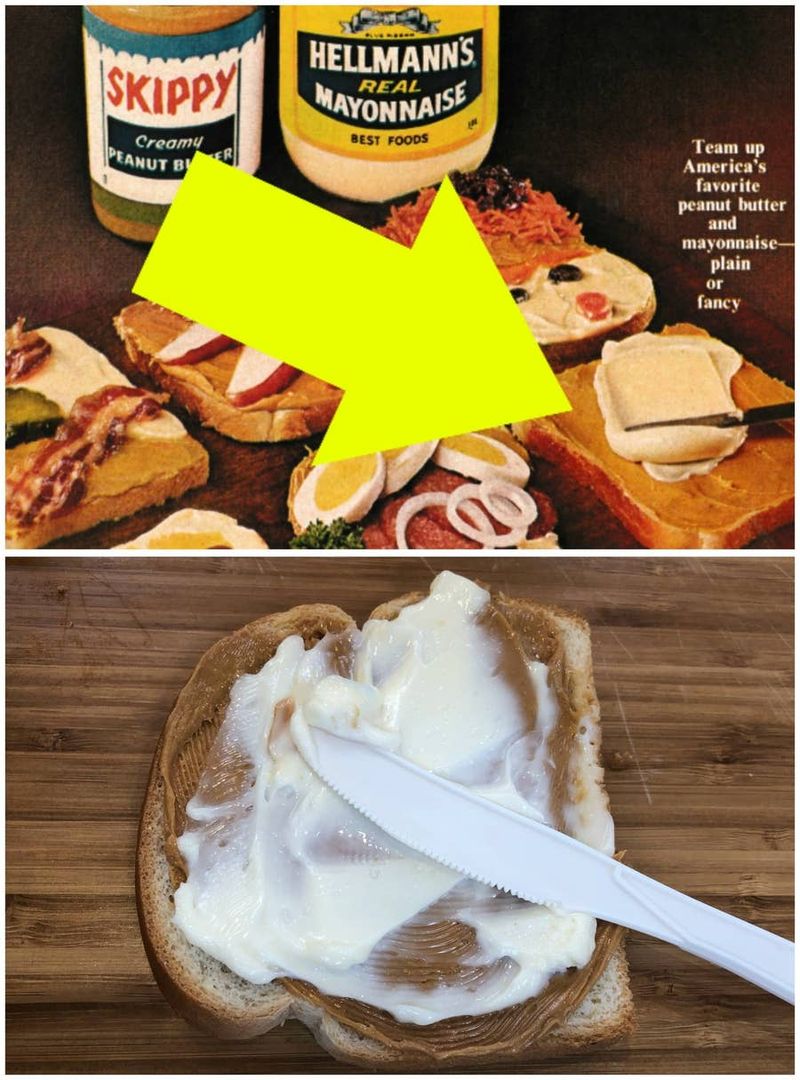
Mayonnaise sandwiches were the epitome of simplicity. Just white bread and mayonnaise, with perhaps a leaf of lettuce or a tomato slice on fortunate days. Picture sitting at the kitchen table, the mayo’s creamy texture providing a modest richness. These sandwiches were often a last resort, a reflection of economic hardship. Yet, they were commonplace in the poorest households, a testament to the stark realities faced by many. Despite their simplicity, they held a place in the culinary landscape of the ’60s, illustrating the true meaning of making do with what was at hand.
